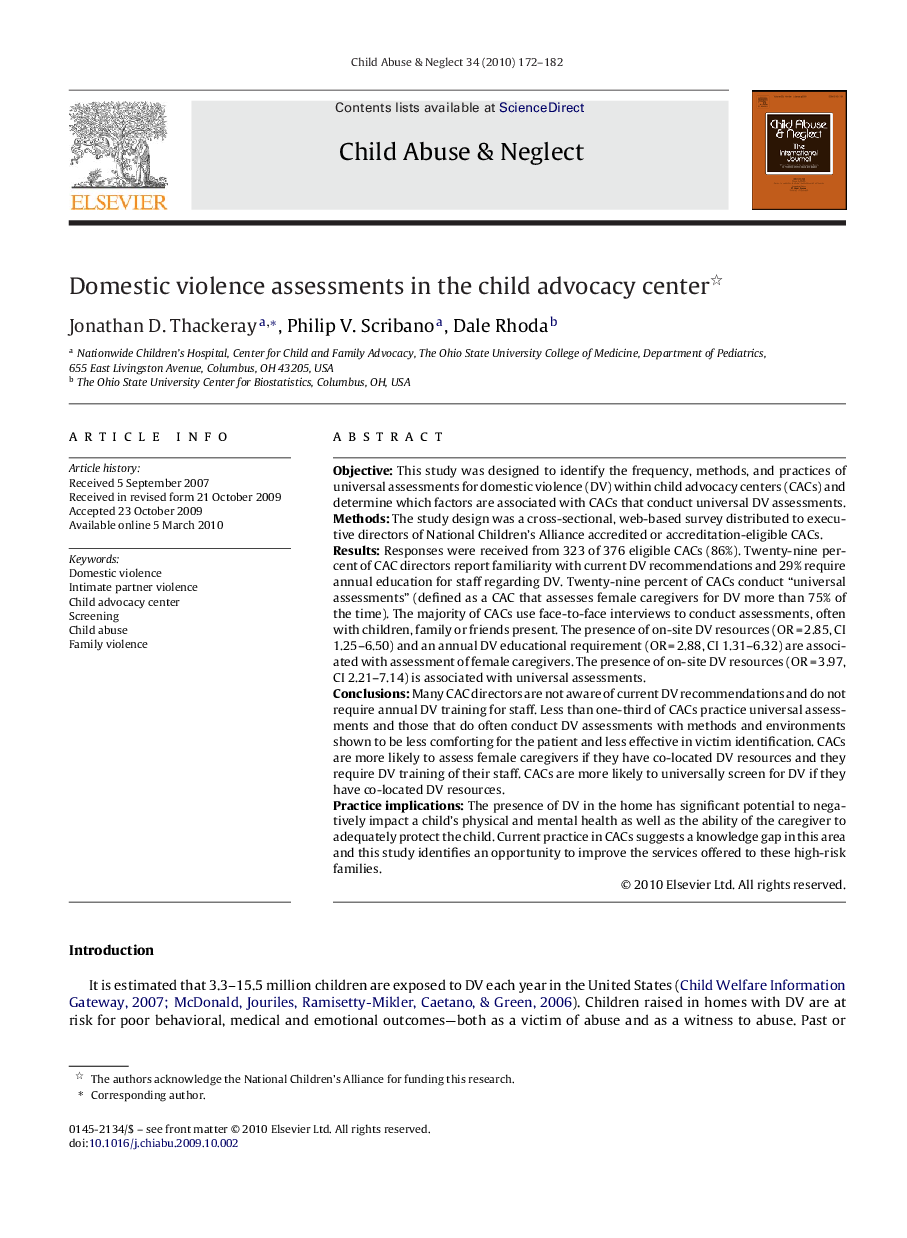| کد مقاله | کد نشریه | سال انتشار | مقاله انگلیسی | نسخه تمام متن |
|---|---|---|---|---|
| 345168 | 617490 | 2010 | 11 صفحه PDF | دانلود رایگان |

ObjectiveThis study was designed to identify the frequency, methods, and practices of universal assessments for domestic violence (DV) within child advocacy centers (CACs) and determine which factors are associated with CACs that conduct universal DV assessments.MethodsThe study design was a cross-sectional, web-based survey distributed to executive directors of National Children's Alliance accredited or accreditation-eligible CACs.ResultsResponses were received from 323 of 376 eligible CACs (86%). Twenty-nine percent of CAC directors report familiarity with current DV recommendations and 29% require annual education for staff regarding DV. Twenty-nine percent of CACs conduct “universal assessments” (defined as a CAC that assesses female caregivers for DV more than 75% of the time). The majority of CACs use face-to-face interviews to conduct assessments, often with children, family or friends present. The presence of on-site DV resources (OR = 2.85, CI 1.25–6.50) and an annual DV educational requirement (OR = 2.88, CI 1.31–6.32) are associated with assessment of female caregivers. The presence of on-site DV resources (OR = 3.97, CI 2.21–7.14) is associated with universal assessments.ConclusionsMany CAC directors are not aware of current DV recommendations and do not require annual DV training for staff. Less than one-third of CACs practice universal assessments and those that do often conduct DV assessments with methods and environments shown to be less comforting for the patient and less effective in victim identification. CACs are more likely to assess female caregivers if they have co-located DV resources and they require DV training of their staff. CACs are more likely to universally screen for DV if they have co-located DV resources.Practice implicationsThe presence of DV in the home has significant potential to negatively impact a child's physical and mental health as well as the ability of the caregiver to adequately protect the child. Current practice in CACs suggests a knowledge gap in this area and this study identifies an opportunity to improve the services offered to these high-risk families.
Journal: Child Abuse & Neglect - Volume 34, Issue 3, March 2010, Pages 172–182